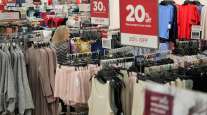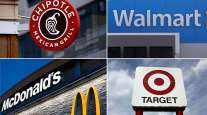Retail Sales Rise Moderately as Auto Buying Jumps

[Stay on top of transportation news: Get TTNews in your inbox.]
WASHINGTON — U.S. retail sales rose moderately in August, driven higher by a jump in auto buying and healthy online sales. But there also were signs that consumers have become more cautious.
The Commerce Department says retail sales increased 0.4% last month, down from a strong 0.8% in July. Excluding autos, sales were unchanged for the first time since February.
The modest slowdown follows signs that consumer confidence, while still strong, has slipped a bit as the U.S.-China trade war has intensified. U.S. businesses have cut back on their investment and expansion plans amid the trade war’s uncertainty and exports have declined. That has left consumers as a key source of growth.

Costco shoppers in Altamonte Springs, Fla., by Joe Burbank/Orlando Sentinel via AP
Online sales continued to soar, rising 1.6%, roughly the same amount as in July, when Amazon held its Prime Day.
There were other signs of consumer caution. Sales at restaurants and bars, an indicator of Americans’ discretionary spending, fell 1.2%, the steepest drop in nearly a year. Sales at grocery stores, clothing shops and furniture stores also fell. General merchandise stores, which include chain retailers such as Walmart and Target, reported a 0.3% drop.
Home and garden centers reported a strong 1.4% gain, which may have been partly spurred by preparations for Hurricane Dorian. Sales at sporting goods and health care stores also rose.
Retail sales make up about one-third of consumer spending, with the rest consisting of services such as haircuts and medical care. Consumer spending, in turn, accounts for about 70% of economic activity.
Consumers still are mostly optimistic about the economy. But the University of Michigan’s consumer sentiment index fell by the most in seven years in August as more Americans worry about the impact of tariffs.
The economy is still creating jobs, if at a slower pace than last year, and wages are rising at a decent rate. That should continue to underpin Americans’ spending power.




